Three days after we upgrade an ancient switch in the campus golf course headquarters, a supply pipe breaks overhead and pours water into our new switch. It’s “environmentally hardened,” but that doesn’t seem to cover immersion.
As a state university, we’re self-insured and there’s no way we’re getting a T&M refurb from the vendor on water damage, no matter how generous they may be. So I’m getting nothing for this dead switch and I may as well see whether there’s any hope of cleaning it.
Oh. Nope, not really.
These are fairly typical of the corrosion across the motherboard. Maybe if I’d got it immediately instead of two days after it happened, a good wash and dry would have left something salvageable, but I have my doubts.
Unidentifiable components were falling off the power supply.
Cleaning Anyway
With the thought that at best the motherboard might be salvageable and a replacement power supply might allow us to use the switch in our test lab, I scrubbed everything with a plastic-bristle brush and dishwashing detergent, then ran it through the dishwasher and took it out to shake dry immediately after the rinse cycle.
The circuit board isn’t nearly as hideous, but all of the contacts on the *QFP are corroded together. It’d take at least a brass brush to clean that up.
But the corrosion under the BGAs is unreachable.
Even I am at a bit of a loss what to do with this dead thing.
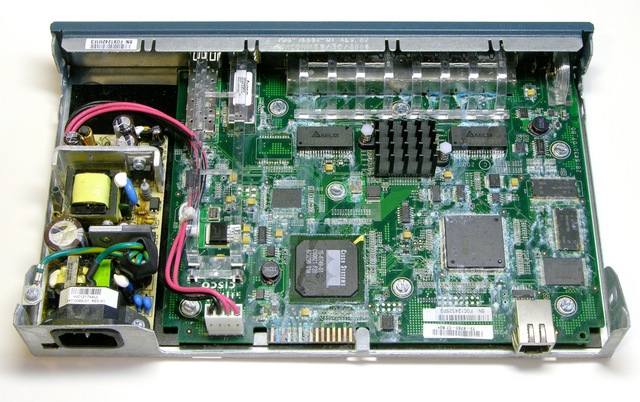
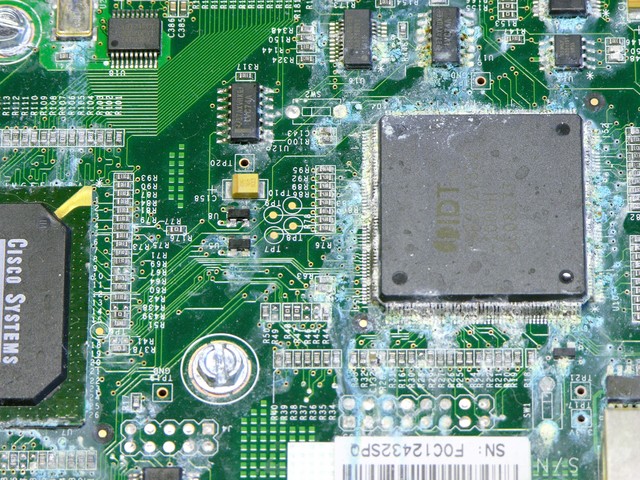
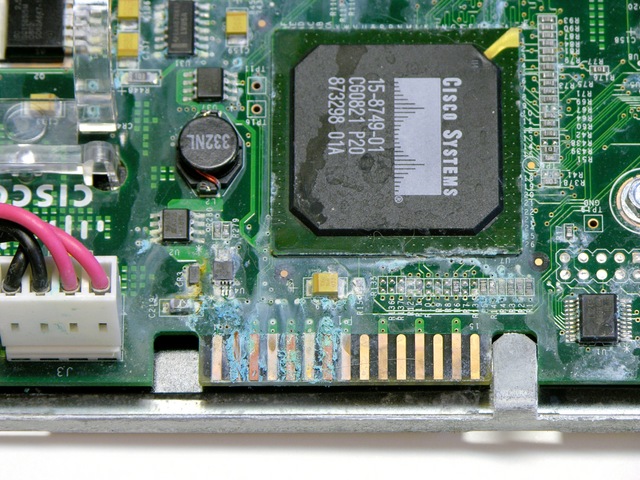
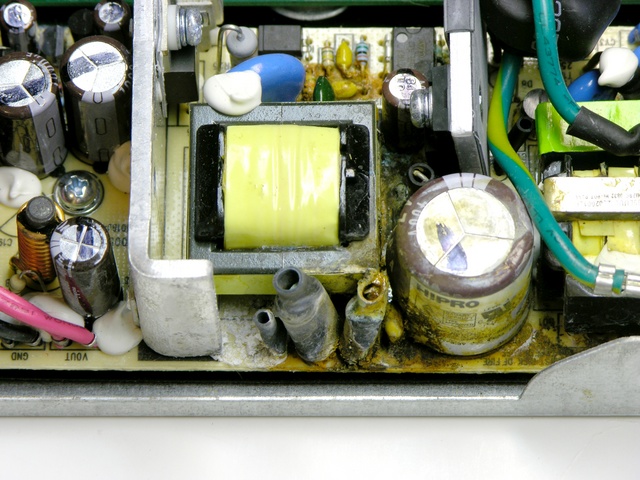
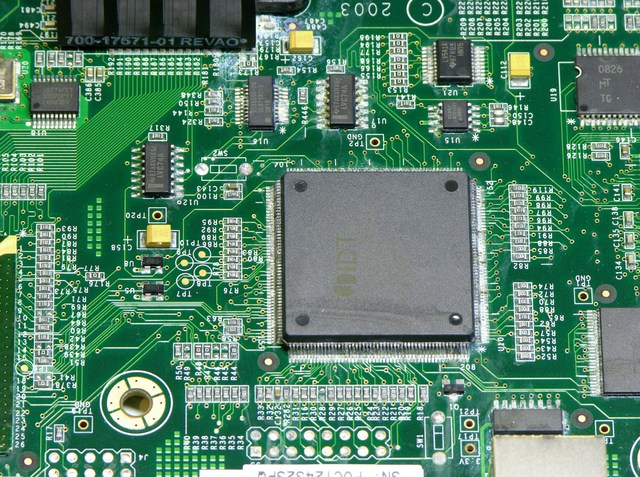
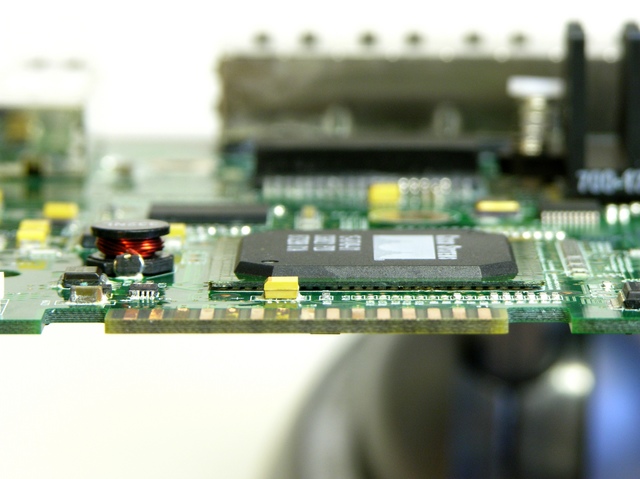
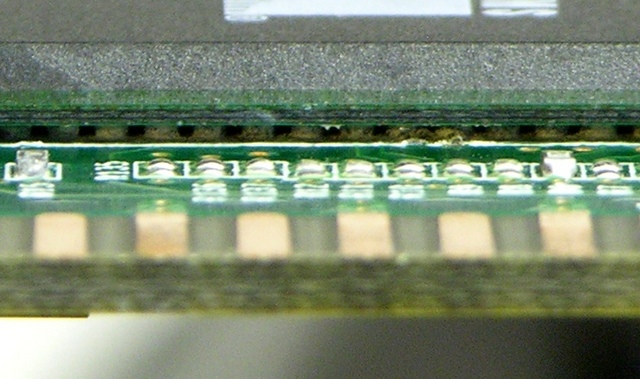
Sorry for your loss.
I just had a similar experience with my sons nintendo DS but at least I get some lcds to play with I guess.
As a side note I always enjoy reading your blog so thank you for sharing your experiences.
Regards,
-Ian
there must be some sort of tiny wire brush you can use to clean out the under-chip corrosion. perhaps a chemical of some kind… brasso would remove the corrosion and could be rinsed away with water, if i remember correctly.
alternatively you could employ the use of a reflow oven and the expertise of someone with experience in these matters.
reflow the chip off the board, remove all solder from that part of the board, apply stencil paste, seat chip back on board, and back into the reflow oven. might work, and you have very little to lose.
I think you’re right: it’s immediate action that’s required.
Due to a certain lack of forethought on the part of the office manager at my gliding club a vase of flowers got emptied into a CRT monitor resulting in the building circuit breakers tripping. Luckily I happened to be in the office at the time so, having made everything safe, I restored power and left the CRT for a short while in case of charged capacitors then took it apart and dried everything out as best I could. I then left it opened up to dry out thoroughly for a couple of days, put it back together, warned everybody that the power might trip again and plugged it in. It worked fine.
We woz lucky but I suspect dealing with it immediately was important, too. Removing power, including any internal batteries, seems like the first step not just from the point of view of human safety but also to reduce the risk of damage to electronics as water wicks into connectors, etc. Just because something’s had a good dousing doesn’t mean that all the damage which could be done has already happened.
Also, if the water which has got in is not pure then washing any muck out quickly would probably help, too. As Steve Roberts says on the subject of marine electronics: water corrodes, salt water corrodes absolutely.
Short of being able to remove the chips to clean under them, I can’t come up with anything. Depending on how useful this switch would be as a test unit, and how much a full cleaning would cost in time/money, it may not be worth it.
On another note, do you know anyone who owns firearms? They can be amazingly therapeutic.
Jeremiah and cenotaph, you’re both hitting on exactly the point — projected return on investment for a thorough cleaning.
I think one could easily put ten hours at $50/hr into cleaning the surface and reflowing chips; and given the corrosion that I’ve seen (particularly in the power supply), I’d give maybe a 20% likelihood of success. If you buy my figures, that’s $500 on 5:1 odds to refurb the main board of a $1500-list switch that we buy at 41% State of Kansas discount. Bad investment.
Yes, it’s disappointing to give up on a new $1500 switch; but it’s my job as a manager to get past the emotions and make the right financial decision for my university. That said, it’s my entertainment as a hobbyist to look deeper and see whether anything simple can be done — and in this case, I think not.
Hello keith,
first of all, you have a very entertaining blog, I check it out frequently.
second, try vinegar, and leave it in for a while(like 30 minutes)as I recall an old childhood trick, that you put corroded pennies into vinigar and it cleans them completely.
Regards,
daniel
Daniel, I recall putting salt into the vinegar too. No idea whether it actually made a difference for the cleaning action.